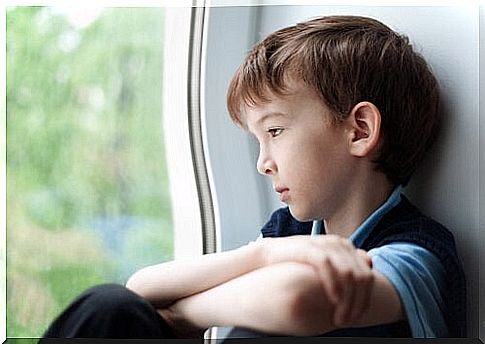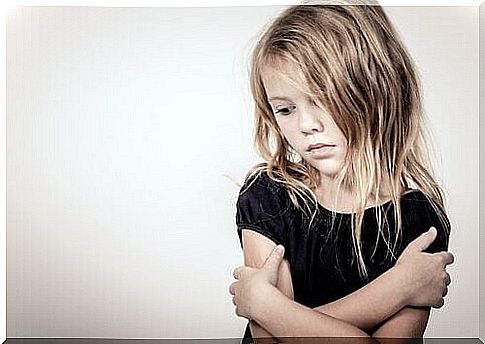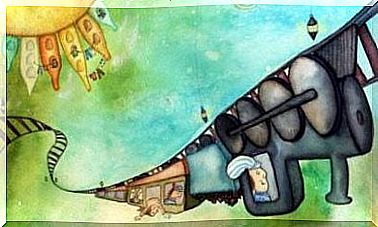Three Misconceptions About Children And Grief

Grief is a painful process that even children experience. However, we do not always understand how children experience this. In fact, despite the fact that children often go through their grief without major complications, it is important to understand how they go through this process. This includes the responsibility to dispel the myths about children and grief.
In this way we can empower ourselves to help our children in the best possible way in this painful situation. However, to better understand the misconceptions, we must first explain what grief actually is.

What exactly is mourning?
Grieving is a process that has different phases to deal with loss. This usually involves the death of a loved one. However, one can also mourn the loss of a job, a relationship or a pet or something similar. Either way, the loss of something is central to this process.
According to the psychologist Kübler-Ross, the grieving process consists of five stages that a person must go through in order to successfully process the loss. However, everyone will go through grief in their own way. Following are the five stages of grief processing according to Kübler-Ross:
- Denial. During this stage, the person cannot believe what has happened. He then denies this in order to defend himself from the pain. His mind tries to find a way to stay sharp and reasonable despite the fact that the grieving person is now extremely vulnerable.
- anger. This stage starts when the person comes to realize that he has lost someone or something. During this stage, the person feels frustrated and powerless as a result of what has happened.
- Negotiate. The grieving person tries to find a way to reverse the situation. In the case of a loved one, the person may turn to religious or supernatural beliefs. The feeling of despair is often most present in this phase.
- Depression. The person feels deep sadness for a while. Hopelessness is also strongly present here.
- Acceptance. Ultimately, at this stage, the person accepts that what happened is irreversible. However, unlike the “depression” phase , people now realize that they can live with the loss. During this phase, they often look back and – if appropriate – learn from what happened.
Please note, although this is the generally expected order, it also happens that the phases are completed in other orders. For example, a person feels deep sadness before getting angry. If someone gets stuck in one of these phases (such as the “negotiation phase”), one speaks of a complicated grieving process.
In any case, it is important to keep in mind that children experience this process differently, especially if they are very young. During their first years of life, children are very dependent, both physically and emotionally. That’s why they don’t really understand death and its consequences.
What they do notice, however, is that someone is suddenly absent. As a result, they might feel abandoned and unprotected.
What are the most common misconceptions about children and bereavement?
Kids don’t realize what’s happening
The most dangerous misconception about children and grief is that children are clueless. It may be true that children do not know exactly what death means, but they do notice changes in their environment. Therefore, they too will miss the person who has passed away very much. They will also notice that the adults around them are having a hard time with something.
The main problem with this misconception is that it results in adults not supporting children in a way that suits their needs. Their needs are not properly seen. However, the loss of a loved one is also difficult for the children. That is why they will need more love, attention, and understanding at this time than ever before.

Their mourning should not last long
This misconception has to do with the so-called “usual duration” of mourning. Some people mistakenly believe that missing someone for a long time is a sign of weakness. That is why some parents also believe that a child should deal with the death of a loved one as soon as possible.
However, this puts way too much pressure on the little ones. Not only do they not get the chance to deal with and process their pain; they also get the feeling that they are not meeting the imposed expectations. In these situations, it is important to understand that children need enough time to go through and express their grief.
Not all death leads to grief
Finally, there are those who believe that not all death should cause pain. However, emotions are not easy to control.
Therefore, our children may also have to deal with a loss that we expected would have little effect on them. This could include the death of someone they didn’t know well or a pet they barely consciously remembered.
Either way, the key to this process is understanding . We must remember that children do not choose to feel sad. That is why we have to show them a lot of patience and help them as best we can.









